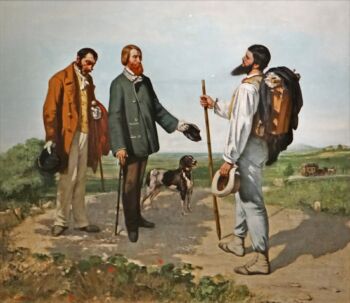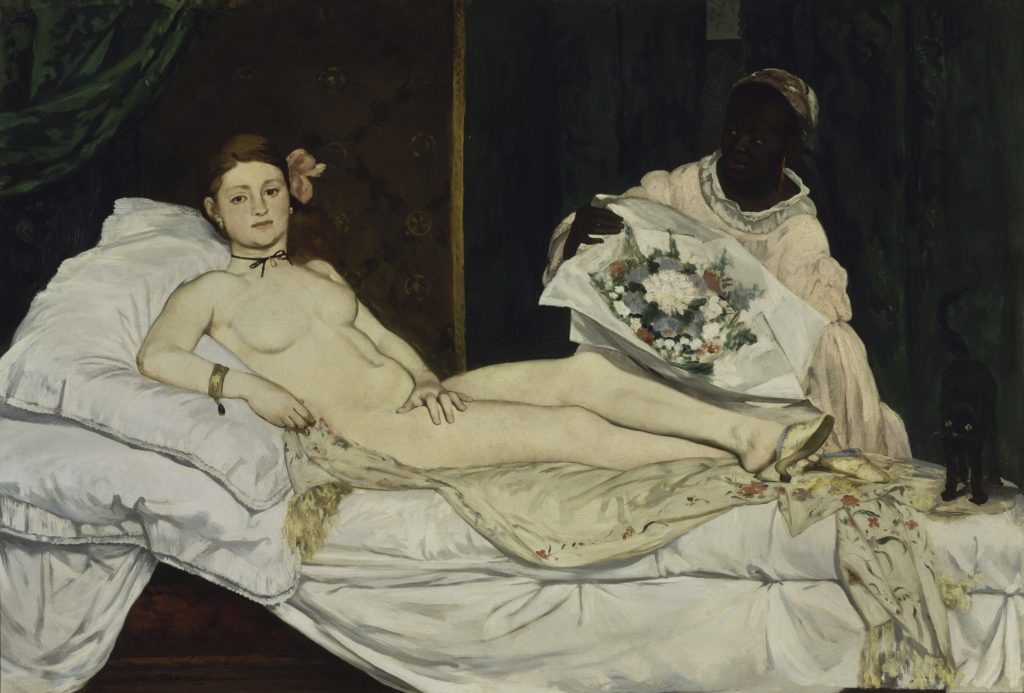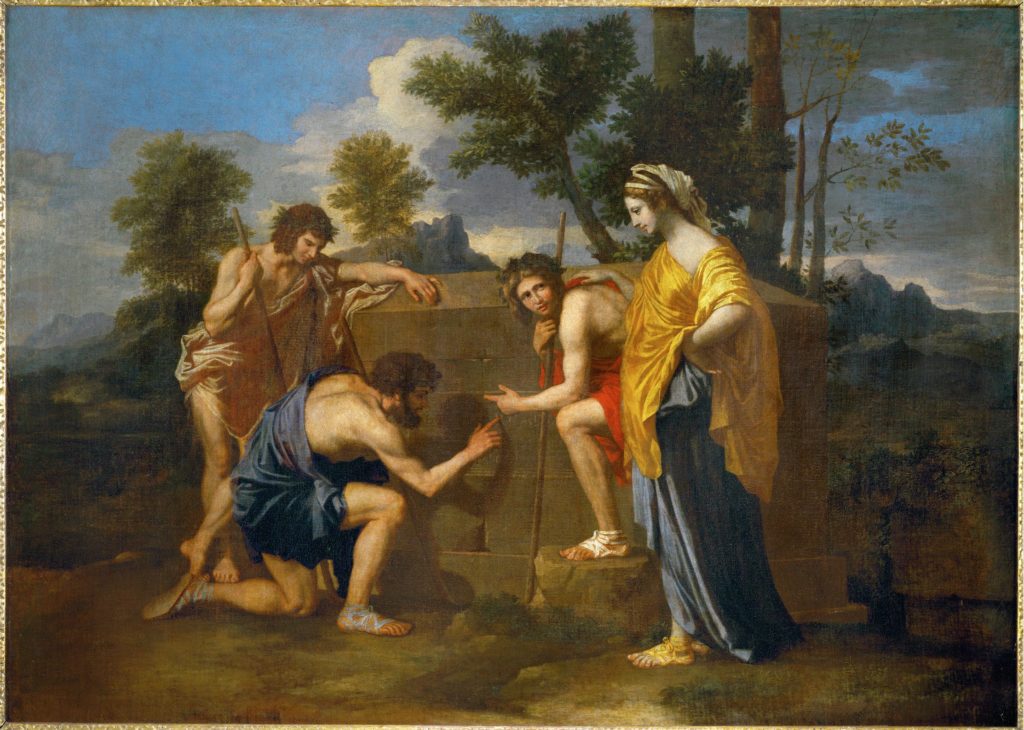While Impressionists are considered the fathers of modern art, even before other visionary painters experimented with new styles, by denying classical and realistic standards. Pre-Impressionists, as they are commonly known, led the way to the later innovating art movements.

Image source: https://en.wikipedia.org/wiki/The_Slave_Ship#/media/File:Slave-ship.jpg
English Landscapists
In the early 19th century the English painters, such as J. M. W. Turner, John Constable, Thomas Cole, re-conceptualized the model of the classical, idealized landscape and began rendering it exactly as they are, in pure, natural light. They also captured on canvas the special mood and atmosphere of the landscape influenced by the different weather conditions and the different circumstances of light. Of course, this was possible thanks to their studies of the natural phenomena, especially light, clouds, and storms, powered by the intellectual climate of the Industrial Revolution. In 1824 Bonington and Constable exhibited their paintings at the Paris Salon. These landscape artworks fascinated the painters of the Barbizon School, as it would be later known, and also Eugène Delacroix, laying the foundation of a new style in France.

Image Source: https://search.creativecommons.org/photos/878cbeef-d51e-4dca-929b-4335437e8d07 by lluisribesmateu1969
The Barbizon School or Fontainebleau
The Barbizon School saw the light when different painters started to visit and live in Fontainebleau. The maximum exponents of this group were Théodore Rousseau, Jean-François Millet, Charles-François and Daubigny, often joined by Jean-Baptiste-Camille Corot. The forest of Fontainebleau become one of the major subjects on these painters’ canvas, followed by scenes of peasant life, and work in the fields. They used to paint landscapes “en plein air”, as it was pioneered by John Constable in the 1810s. In their canvases, the rendering of the light is influenced by the time of the day, weather, and season. Their palette, rarely bright, was made of dark green, grey, and brown tones. It was the beginning of a quite loose brushstroke, compared to the previous styles. Anyway, the Barbizon School never joined the Impressionist art movement.

Image Source:https://en.wikipedia.org/wiki/Th%C3%A9odore_Rousseau#/media/File:Th%C3%A9odore_Rousseau_001.jpg
Beyond Realism
The Realist movement emerged in France around the 1840s and affected different art fields. Gustave Courbet led the Realism art movement in France, but soon it spread across Europe, influencing a large number of later trends in art. Realism was a reaction to Romanticism and its exaggerated emotionalism and drama which had dominated French literature and art since the early 19th century. Realists aimed to portray contemporary people by focusing on unidealized subjects, not avoiding the darker and menacing aspects of nature. Peasants, laborers, and proletarians, previously rejected in artworks, were the protagonists of Realist works, depicted in their ordinary life. The popularity of such “realistic” works grew with the introduction of photography. Beauty and idealization typically found in classical art were ignored by using sober earth and grey tones. This movement sparked controversy for its critic of the upper classes, as well as its promotion of new values that came along with the industrial revolution. Realism is unanimously regarded as a major contributing factor to the beginning of modern art.

Image Source: https://search.creativecommons.org/photos/99fed5d6-a761-4eb4-a548-7333d4492597 by dalbera
Manet, the “Father of Modernism”
Édouard Manet, despite not being considered an Impressionist, greatly influenced this movement: in the 1860s, he headed Impressionists at Café Guerbois. These meetings included Monet, Renoir, Degas, Alfred Sisley, Émile Zola, and sometimes Paul Cézanne, Camille Pissarro, and others. Manet’s new approach to painting, was the bridge between realism and impressionism. Manet preferred a direct and realistic painting for his subjects, by completing his works in one sitting. He rejected the classical technique, in which a painting was constructed using multiple layers of paint, and adopted a technique known as “alla prima” (“at once”). That meant he had to choose the perfect color right from the very beginning because there were no layers to fall back on. Thanks to him, this technique became a standard in oil painting. Manet’s work, characterized by controversial subject, roughly painted style, and photographic lighting, is unanimously considered “early modern”. This style was seen as a challenge to the Renaissance works he used as inspiration, such as in “Olympia” (1863). For the same reason, his paintings caused a lot of scandals and were refused at the Salon de Paris.

Image source: https://search.creativecommons.org/photos/0e626b95-4913-4856-9d58-f83b7c9ea403 by La case photo de Got
The Geometric Essential in Reality
Paul Cézanne’s art is regarded as a milestone for the development of modern art. Contemporary Impressionists, Cézanne escapes easy categorization: his style influenced Impressionism itself, Fauvism, and Expressionism. Once Cézanne said, “I want to make of Impressionism something solid and lasting like the art in the museums” remarking the link between past and future he wanted to represent. In his mature works, Cézanne developed a solidified, geometrical style of painting. His research led him to an authentic observation of the seen world by the most accurate method of representing it in paint that he could find. The reality was deconstructed into simple geometric essentials. Cézanne learned that to alter the color of an object meant to alter its structure. He explored the binocular vision of an object by rendering the phenomena into simultaneous visual perceptions, in order to provide a sense of depth in the viewer. The solid representation of reality inspired the later movement known as Cubism.

Image source: https://search.creativecommons.org/photos/a40b215e-f4ea-46ba-972d-984ef4b11e1f by The Metropolitan Museum of Art
Against Neoclassicism
Pre-Impressionists rebelled against the rigid neoclassical art context. Neoclassicism arose during the 18th century, in opposition to the overly decorative styles of Rococo and Baroque. The aim of this movement was to impart a moralizing message, by expressing classical virtues, in an era characterized by social and technological transformations. Neoclassical arts were inspired by the aesthetics and philosophies of the Ancient Greeks and Romans, and by the rediscovering of classical standards of beauty and order. This was fueled by the fascination of recently unearthed ruins of Pompeii and Ercolano and by the Grand Tour.

Image Source: https://search.creativecommons.org/photos/96ee4efc-6126-4743-995f-3724278f891b by Joaquín Martínez Rosado
The hierarchy of painting adopted by neoclassical style was established by the French Royal Academy of the Arts in 1669. History painting, including biblical and mythological subjects, was ranked as the top category, followed by portraiture, genre painting, landscapes, and everyday life. This hierarchy was used to evaluate works submitted for the Salon or for other prizes and influenced the financial value of artworks. Neoclassicism was influenced by the artworks of Nicolas Poussin and Claude Lorrain, which were revered as perfect examples of historical paintings.
Info Sources:
https://www.impressionism.nl/impressionism/pre-impressionists/
https://about-france.com/art/impressionism.htm
https://www.tate.org.uk/art/art-terms/p/plein-air
https://en.wikipedia.org/wiki/Realism_(arts)
https://www.theartstory.org/movement/neoclassicism/
https://en.wikipedia.org/wiki/%C3%89douard_Manet
https://en.wikipedia.org/wiki/Paul_C%C3%A9zanne
